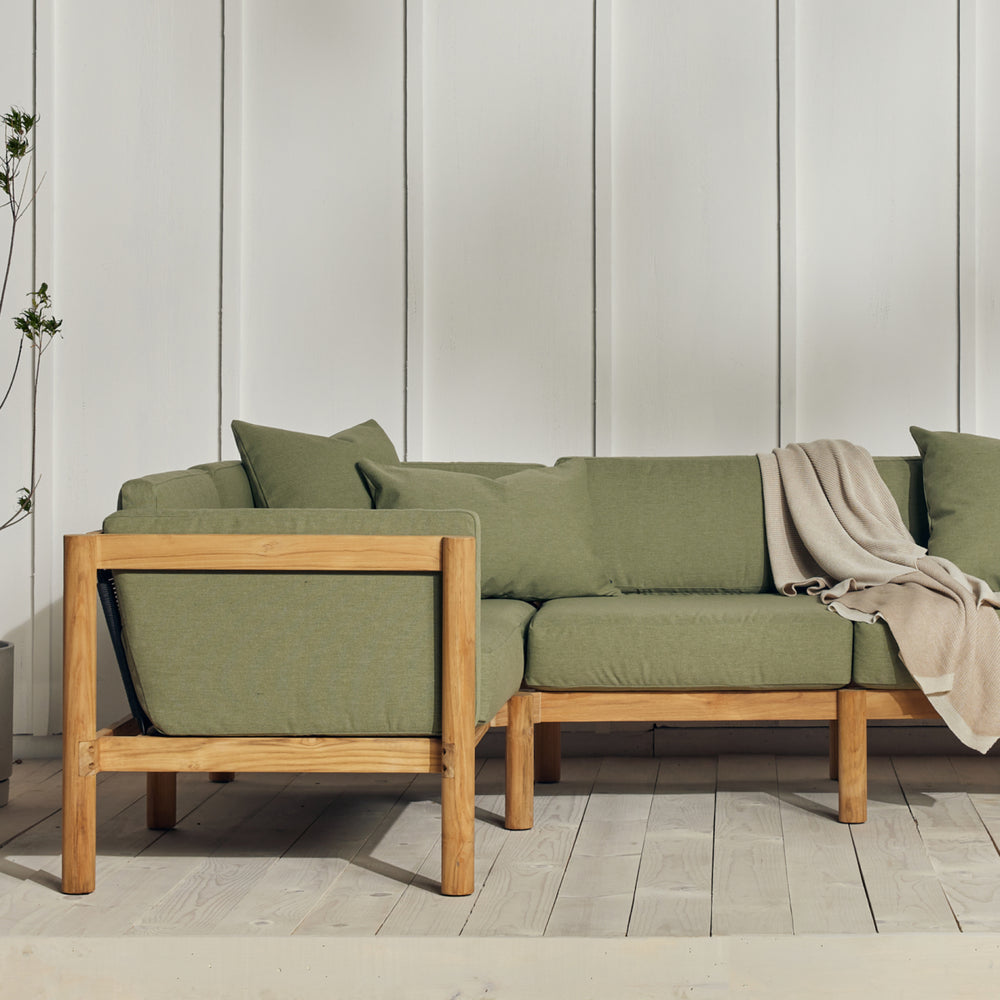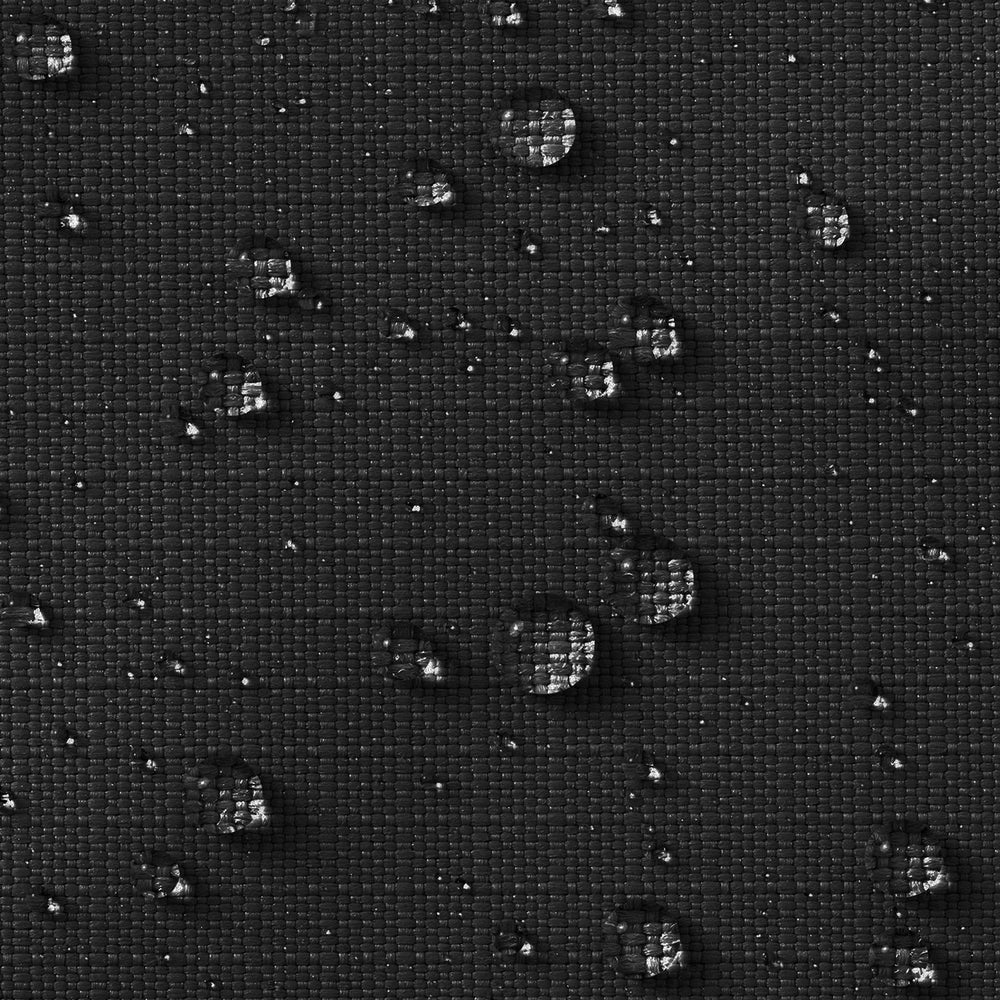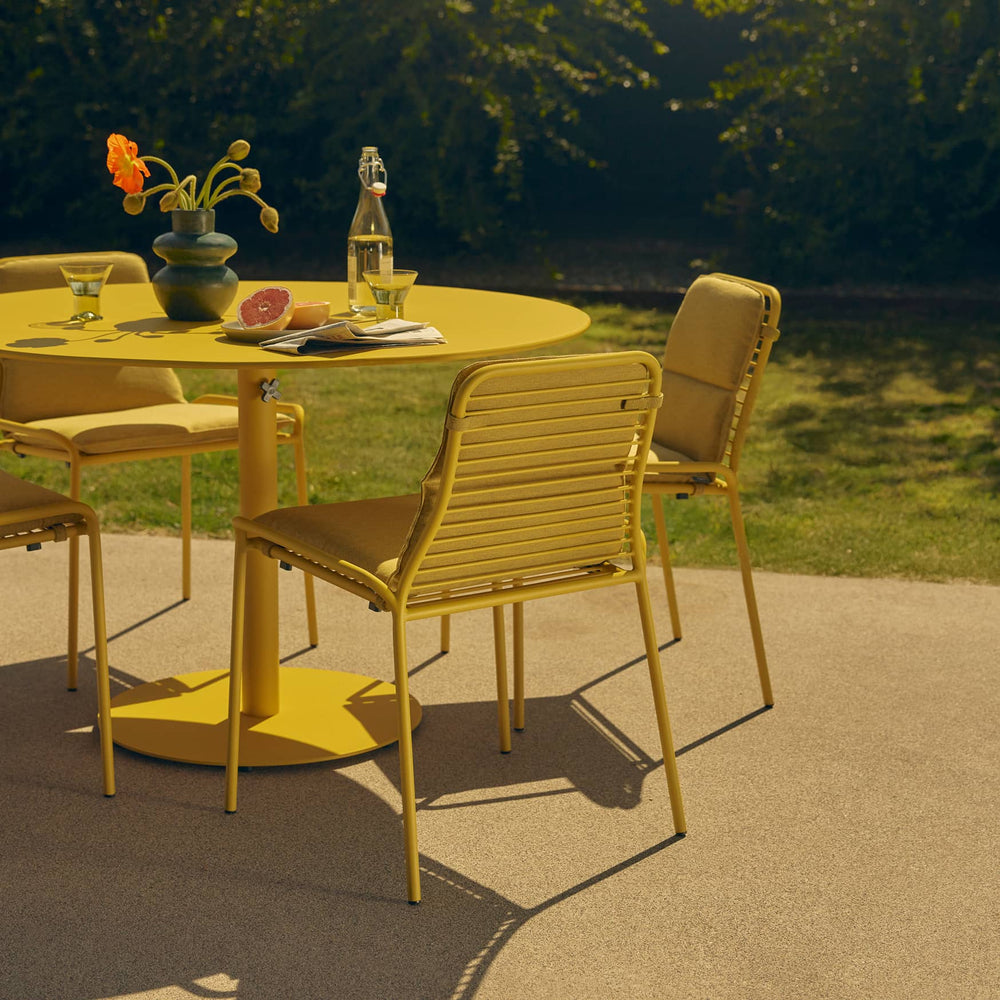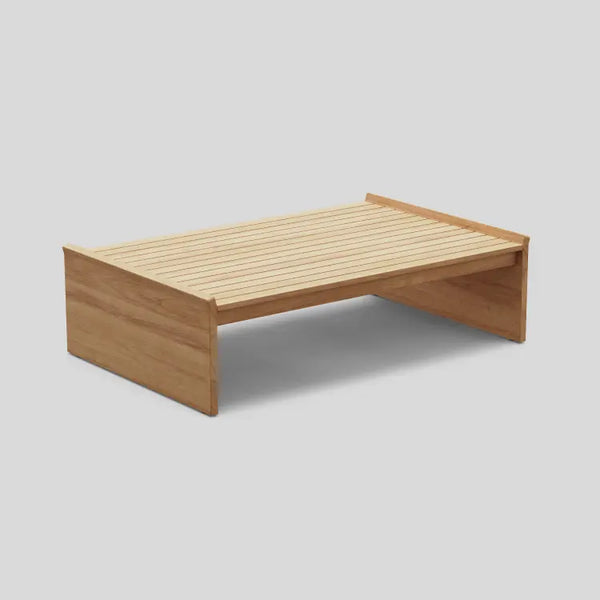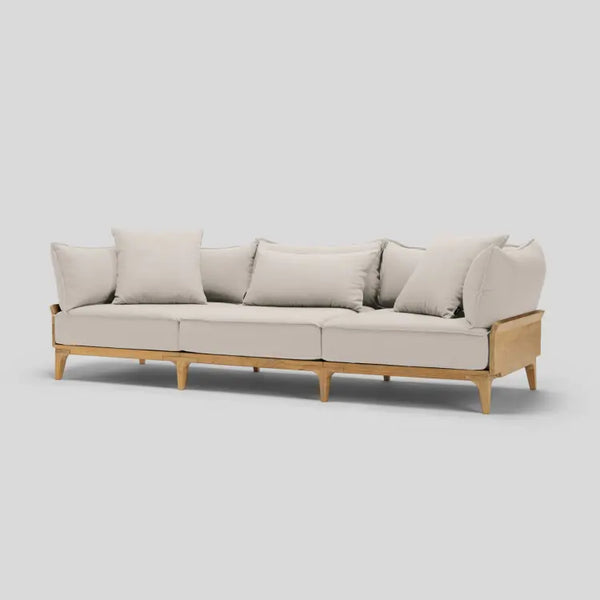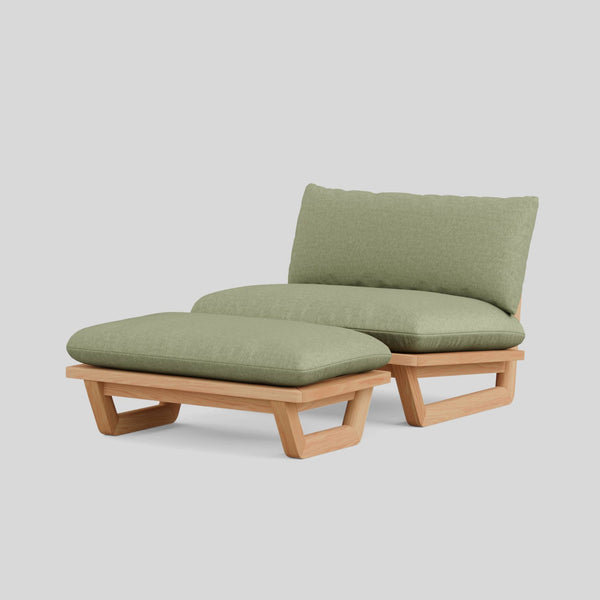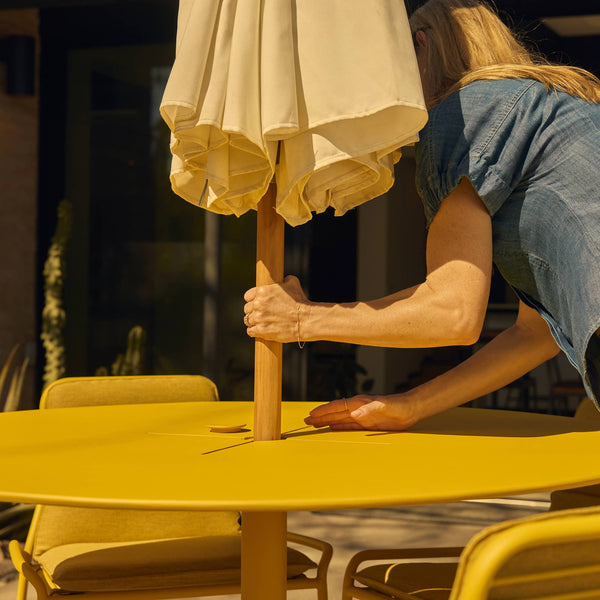Sunbrella vs olefin: Everything you need to know
Written by Neighbor Editorial Team | @neighboroutdoor | Opens in a new window. |
Learn the pros and cons of two leading outdoor fabrics

With so many different types of outdoor fabrics available, it can be hard to tell them apart. Sunbrella and Olefin fabrics are two of the most popular options for outdoor furniture, cushions, and other outdoor uses. However, there are key differences between the two types of fabric. To determine the best type of fabric for your outdoor space, it's important to consider your local climate and the type of elements that your outdoor living space is exposed to. We’ll help you make an informed decision with a guide to Sunbrella vs olefin fabric, including pros, cons, warranty, durability and price comparison.
Sunbrella
Sunbrella is the industry-leading brand in durable outdoor fabric. Made of 100% solution-dyed acrylic, Sunbrella’s fabric is designed specifically for outdoor use and is renowned for its durability through all weather conditions.
The advantages of Sunbrella fabric
Weather-resistance
Sunbrella fabric is resistant to all types of weather, including consistent sun and heavy rains. Cushion covers made with Sunbrella fabric stand strong against the sun’s harsh UV rays and are resistant to fading. They’re able to withstand years of sun exposure and heavy use without sacrificing look or feel.
Acrylic fabric repels water and is highly resistant to mold and mildew growth, even in wet or humid conditions. In terms of weather resistance, Sunbrella is the ideal fabric for all outdoor applications, like cushion covers, throw pillows, rugs, ottomans, umbrellas, awnings, boat covers, and furniture covers that face sun and rain.
Appearance
Sunbrella fabrics come in a variety of colors, patterns and textures, which allows for easy design flexibility and customization in your outdoor living space. From minimalistic and modern designs to classic designs, Sunbrella provides a wide range of color options. The high-grade, solution-dyed acrylic fabric fibers are dyed before the fabric is woven, ensuring that color is rich, consistent and resistant to fading from UV rays.
Cleaning and maintenance
Sunbrella fabric is incredibly strong and can be cleaned with mild soap and water, or with harsher chemicals like bleach for stubborn stains. Cushion covers are easily dusted off with a brush or damp cloth. To clean Sunbrella fabric, simply mix a solution of mild soap and water. Combine 1/4 cup mild soap (such as Woolite or Dawn) with 1 gallon of lukewarm water. Use a soft bristle brush to gently scrub the fabric in a circular motion. Rinse the fabric off with clean water and let it air dry.
For bigger stains or dirt embedded in the fabric, you can mix 1 cup of bleach with 1/4 cup of mild soap and a gallon of water. Spray the solution on the fabric and allow it to soak in for 15 minutes. Then, clean the surface with a sponge or soft bristle brush. Rinse to remove soap residue and allow the fabric to air dry.
Sunbrella fabric can also be hand washed or machine washed for convenience. To maintain Sunbrella fabric in your outdoor living space, simply dust off your fabric after each use and spot clean spills or stains as needed. Learn more about how to care for Sunbrella fabric.
What you need to know about Sunbrella fabric
The main disadvantage to Sunbrella fabric is the price. Sunbrella fabric is generally more expensive than other fabrics and may not suit some budgets. However, Sunbrella fabric will outlast most fabrics and is seen as an investment for a long-lasting outdoor living.
Warranty
Sunbrella offers a limited warranty on the brand’s upholstery fabrics, specialty fabrics, shade and marine fabrics, and drapery fabrics. Upholstery fabrics and speciality fabrics come with a 5 year warranty, while shade and marine fabrics come with a 10 year warranty. The company’s warranty ensures that your Sunbrella fabrics are covered and protected against loss of color, loss of strength, abrasion and pilling.
Durability
The exceptional durability of Sunbrella fabrics is one of the reasons we use this performance fabric for all of our outdoor cushion covers. Even with frequent use and high traffic, this outdoor fabric won’t show signs of wear and tear as easily as other fabrics.
Sunbrella fabric is weather-resistant, stain resistant, mold and mildew resistant, abrasion resistant and its colorfast properties prevent the color from fading. Sunbrella is life-proof and able to stand all tests of time. If your Sunbrella cushion covers lose strength, they’re covered under Sunbrella’s warranty.
Price
The price of Sunbrella fabrics vary by type and application. Because of the durable design, it can cost more to produce than inferior outdoor fabrics.. At Neighbor, our outdoor sectionals and seats come with premium Sunbrella cushion covers, and certain fabrics like those we use on our Terra collection use 20% recycled content. You can request a free swatch kit of colors to find the perfect fit for your outdoor living space beforehand too.
Olefin fabric
Olefin outdoor fabric is a type of synthetic fabric made primarily from chemicals ethylene and propylene. First manufactured in Italy in 1957, Olefin fabric was developed from a form of polypropylene that came about in the 1930s. Since then, olefin fabric has become a popular choice in outdoor apparel and outdoor furniture upholstery due to its water-repellent properties and lightweight composition.

The advantages of Olefin fabric
Weather-resistance
Olefin fabric is resistant to fading, staining, abrasion, and mold and mildew growth. When water comes in contact with Olefin fabric, the water will pool and run off, instead of absorbing into the fabric. Olefin fibers are resistant to UV damage, quick-drying, lightweight and breathable. This fabric stands strong in areas faced with humidity or heavy rains. Olefin fabric also does not transmit static, which is ideal for sitting on the fabric or wearing it.
Appearance
Olefin fabrics come with a wide range of colors, weaves and textures, from traditional to contemporary. Because olefin fabrics are engineered to resist fading, the color stands strong through most weather conditions.
Cleaning and maintenance
Like Sunbrella fabrics, Olefin fabrics require minimal maintenance. Olefin fabrics can be cleaned with a mild soap and water solution and only require as-needed spot cleaning to prevent stains. This fabric can withstand harsh chemicals like bleach for deeper cleanings.
What you need to know about Olefin fabric
Olefin fabrics are heat sensitive and should not be exposed to high temperatures or left in direct sunlight. They can also be damaged by friction. Olefin outdoor fabrics can show wear and tear in high traffic areas and do not regain their original shape as well as Sunbrella fabric.
Warranty
The warranty of olefin fabrics depends on the manufacturer. Some manufacturers of olefin fabric offer a 1-year warranty, while others offer a 5-year warranty.
Durability
Olefin fabric is durable except in extreme heat. Outdoor cushions with olefin fabric will repel water, resist fading from UV rays, resist abrasion, and prevent mold and mildew growth.
Price
Olefin fabrics are generally cheaper than Sunbrella fabrics but don’t last as long.
Other types of outdoor fabric
Olefin and Sunbrella fabric aren’t the only options in outdoor furniture fabric. It’s important to know all your options and understand the pros, cons and ideal environments for each fabric in order to choose the right brand for your outdoor space.

-
Polyester fabric
Polyester is a synthetic material made from a mixture of petroleum, coal, air and water. It's often used to fabricate outdoor cushion covers, umbrellas, awnings and outdoor clothing. It's highly resistant to water and moisture, and is lightweight with a low-maintenance finish. Polyester is not as breathable as olefin and Sunbrella, and is not considered to be a sustainable material.
-
Outdura fabric
Outdura is a solution-dyed acrylic fabric just like Sunbrella. It features the same qualities of all-weather-resistance and can be cleaned and maintained easily with soap and water, or with stronger solutions like bleach. The main difference between Sunbrella and Outdura is that Sunbrella is more widely known and offers a wider variety of colors and patterns than Outdura. Like Sunbrella, Outdura acrylic fabrics outperform olefin fabrics in durability.
-
Solution-dyed acrylic fabric
Acrylic is a synthetic fabric made from acrylic yarns. The yarn fibers are then solution-dyed during the manufacturing process. Fabrics that aren't solution-dyed are dyed after the finished piece is manufactured, which can lead to color fading over time. Solution-dyed acrylic, like Sunbrella, stands as the most durable and long-lasting outdoor fabric material available.
-
Upholstery fabric
Any fabric used to upholster or cover furniture pieces is upholstery fabric. Upholstery fabrics should be specifically designed for outdoor use, otherwise they should not be exposed to the elements. Upholstery fabrics like polyester, olefin and acrylic are weather-resistant, while upholstery fabrics like cotton and linen are not.
Quality outdoor furniture with durable Sunbrella fabric
When it comes to Sunbrella outdoor fabrics vs. olefin and other outdoor fabrics, Sunbrella proves to be more resilient, more durable in extreme temperatures, and comes with a guaranteed warranty. Sunbrella won’t show wear and tear in high traffic areas like olefin fabrics tend to, and Sunbrella fabric won’t be damaged by friction.

At Neighbor, we use Sunbrella fabric throughout our furniture collection. From our deep seat outdoor lounge chair to our modern teak outdoor sectional, aluminum outdoor sectional, outdoor throw pillows and more, we choose Sunbrella’s vibrant and fade-proof fabric. All of our outdoor cushions feature comfy and durable quick-drying foam to ensure less time between rain and relaxation.
Create your living room outdoors. Read through reviews and shop our collection today.
← Older Post Newer Post →

